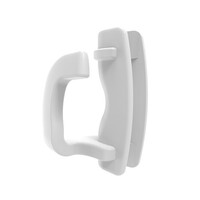Offset Insulators


Much stronger than the familiar spacer screw insulator by using a new technology and more durable because of the metal core. It reduces the chance of short-circuiting to nil.


This Gallagher insulator has been developed especially for fitting on a spacer insulator (item 072491 or 029006).


With an electrified tip and zero leakage through the post, the live tip offsets are an effective, new option for protecting existing fences. 10 year product warranty.
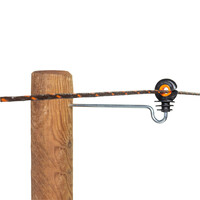

High-quality 18 cm Gallagher XDI offset insulators with metal core, designed to prevent damage to non-electric fences. Ideal for securing electric fence wires to wooden posts, offering durability and reliable performance.


Stronger and more durable with a metal core, providing ample distance between the fence and animals. Suitable for polywire, cord, and tape up to 12.5 mm, with minimal risk of short circuits and an orange wear ring for easy maintenance.
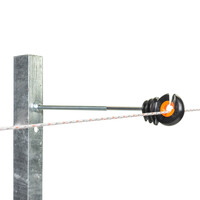

Gallagher XDI Offset Bolt-on Insulator (20 cm, 10 pcs.) for metal and concrete posts. Strong, durable design with a metal core to reduce short circuits and an orange wear ring for easy maintenance.


Discover the Gallagher Live Tip Offset insulator. With an electrified tip and zero leakage through the post, the live tip offsets are an effective option for protecting existing fences. 10 year product warranty.


For electrifying specific existing non-live fences quickly. Very suitable for rope and tape. Pre-drill hole and staple the offset to the wooden post.
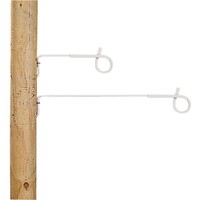

For electrifying specific existing non-live fences quickly. Very suitable for rope and tape. Pre-drill hole and staple the offset to the wooden post.
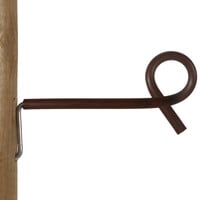

For electrifying specific existing non-live fences quickly. Very suitable for rope and tape. Pre-drill hole and staple the offset to the wooden post.


For electrifying specific existing non-live fences quickly. Very suitable for rope and tape. Pre-drill hole and staple the offset to the wooden post.
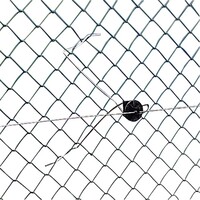

For protecting and electrifying chain link netting. The completely galvanized clips are easy to fit to any type of netting. Pin lock insulator makes fixing the wire easy. 32cm long.


For electrifying existing or run down fences. Easy to fix. 30cm long. Large spark guard. Pin lock for easy installation and removal of wires.
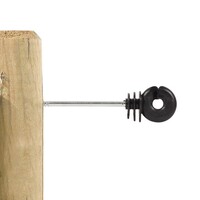

Solid high quality offset screw-in insulator (10 cm) for wooden posts. Without metal core. Suitable for (poly) wire and cord.
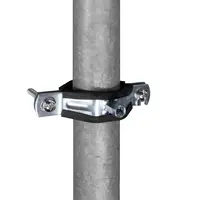

A specially developed mounting bracket which fits on every garden wire enclosure.


This offset screw-in insulator is a very strong insulator for wooden posts and is suitable for plastic strand, cord and tape up to 12.5 mm. With it, you can turn a simple fence into an electric pasture fence. For wooden posts.


These insulators utilise the patented Gallagher ring-top technology to provide a practical, robust and secure solution to protect your fence from damage from livestock. Simply hammer into wooden posts and secure with a staple if necessary.
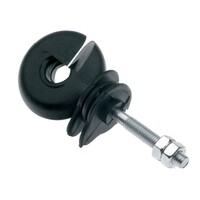

Good quality ring insulator BS Bolt-on Black. Packaging contains 25 pieces.


These insulators utilise patented Gallagher ring-top technology to provide a practical, robust and secure solution to protect your fence from damage from livestock. Simply hammer into wooden posts and secure with a staple if necessary.
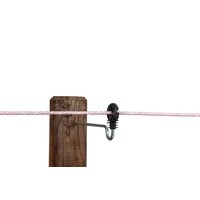

Secure your electric fence with Pulsara Screw-in Offset Insulators (15 pcs). Designed for wooden fences, these 18 cm insulators are perfect for wire and cord, providing a safe offset to prevent power leakage. Ideal for semi-permanent fencing setups.


Easily electrify wooden fences with the Black Offset Insulator (180mm). Perfect for wire and cord, this durable insulator ensures secure placement and reliable fence power. Ideal for livestock and boundary fencing systems.
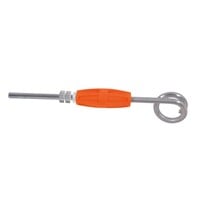

- For the protection of existing fences
- Durable solution
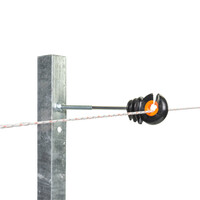

Ultra-strong, patented design for cord and plastic wire. Features a centered metal core to prevent short circuits and an orange wear ring for easy replacement. Fits metal reel corner posts and concrete posts.
